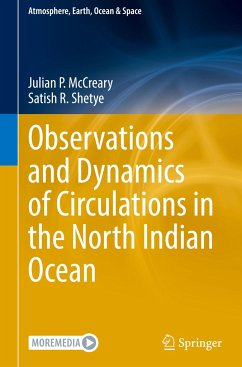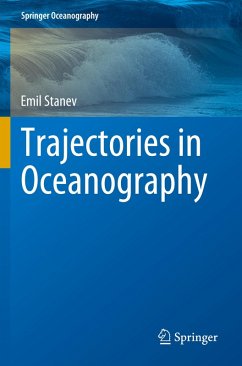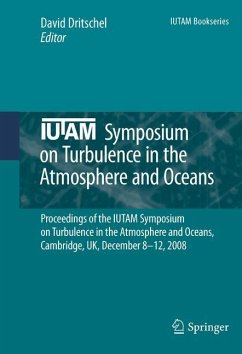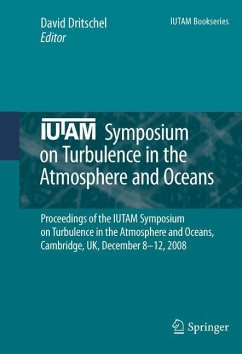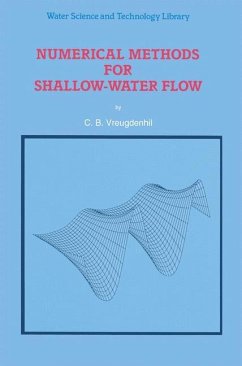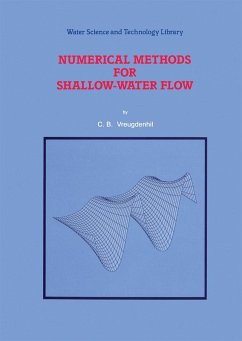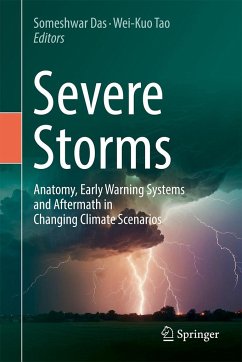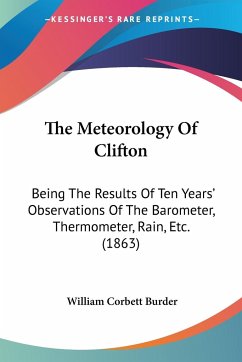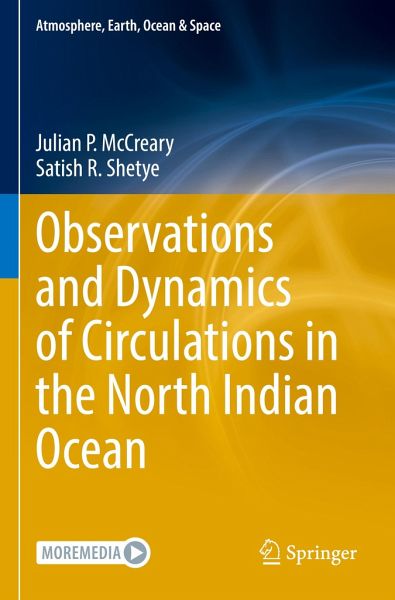
Observations and Dynamics of Circulations in the North Indian Ocean
Versandkostenfrei!
Versandfertig in 6-10 Tagen
76,99 €
inkl. MwSt.
Weitere Ausgaben:

PAYBACK Punkte
38 °P sammeln!
The book is the first to focus on the physical oceanography of the North Indian Ocean (NIO), a special region of the global ocean that exhibits a distinct seasonality due to the impact of the South Asian Monsoon (SAM). It is written as a textbook about the NIO for graduate students, lecturers, and researchers in physical oceanography. It will also be useful for courses on the interior, coastal, and equatorial dynamics in any other ocean. It helps readers, particularly new entrants to the field, to gain a comprehensive understanding of tropical-ocean dynamics by: developing from first principle...
The book is the first to focus on the physical oceanography of the North Indian Ocean (NIO), a special region of the global ocean that exhibits a distinct seasonality due to the impact of the South Asian Monsoon (SAM). It is written as a textbook about the NIO for graduate students, lecturers, and researchers in physical oceanography. It will also be useful for courses on the interior, coastal, and equatorial dynamics in any other ocean. It helps readers, particularly new entrants to the field, to gain a comprehensive understanding of tropical-ocean dynamics by: developing from first principles the equation set for the linear continuously stratified (LCS) model, which has long been used to study tropical oceans; and then obtaining solutions that explore different aspects of the dynamics.
Part 1 of the book provides an overview of observed ocean circulations and forcing functions in the NIO that are linked to the SAM. Part 2 develops the equations of motion for the LCS model. Part 3 (Free Waves) and Part 4 (Forced Solutions) derive and discuss analytic solutions to the LCS model that illustrate basic processes in the interior (unbounded), coastal, and equatorial regions of the ocean. The last two chapters of Part 4 consider more complicated processes and phenomena that build upon the simpler solutions previously found: vertical propagation of coastal and equatorial waves, and the Indian Ocean's shallow overturning circulations. Each analytic solution is illustrated (and extended) by a suite of numerical LCS solutions presented as video clips, providing a powerful means for visualizing complex processes.
Part 1 of the book provides an overview of observed ocean circulations and forcing functions in the NIO that are linked to the SAM. Part 2 develops the equations of motion for the LCS model. Part 3 (Free Waves) and Part 4 (Forced Solutions) derive and discuss analytic solutions to the LCS model that illustrate basic processes in the interior (unbounded), coastal, and equatorial regions of the ocean. The last two chapters of Part 4 consider more complicated processes and phenomena that build upon the simpler solutions previously found: vertical propagation of coastal and equatorial waves, and the Indian Ocean's shallow overturning circulations. Each analytic solution is illustrated (and extended) by a suite of numerical LCS solutions presented as video clips, providing a powerful means for visualizing complex processes.



